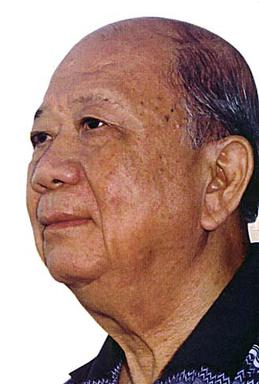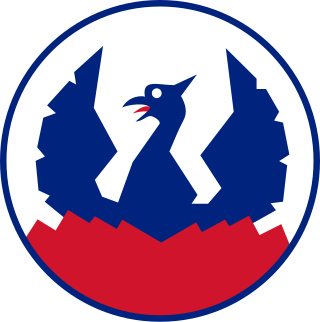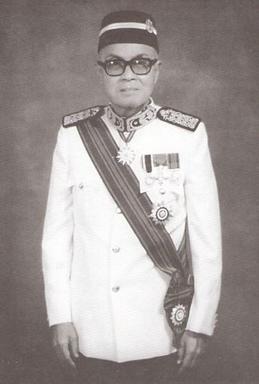
The Malayan Emergency, also known as the Anti–British National Liberation War(1948–1960), was a guerrilla war fought in British Malaya between communist pro-independence fighters of the Malayan National Liberation Army (MNLA) and the military forces of the Federation of Malaya, British Empire and Commonwealth. The communists fought to win independence for Malaya from the British Empire and to establish a socialist economy, while the Malayan Federation and Commonwealth forces fought to combat communism and protect British economic and colonial interests. The term "Emergency" was used by the British to characterise the conflict in order to avoid referring to it as a war, because London-based insurers would not pay out in instances of civil wars.

Search and destroy is a military strategy which consists of inserting infantry forces into hostile territory and directing them to search and then attack enemy targets before immediately withdrawing. First used as part of counterinsurgency operations during military conflicts in Southeast Asia such as the Malayan Emergency and the Vietnam War, the strategy was developed to take advantage of new technological capabilities available to Western militaries such as the helicopter, which allowed for the adoption of new tactics like the air assault.

Jungle warfare or woodland warfare is warfare in forests, jungles, or similar environments. The term encompasses military operations affected by the terrain, climate, vegetation, and wildlife of densely-wooded areas, as well as the strategies and tactics used by military forces in these situations and environments.

Chin Peng, born Ong Boon Hua, was a Malayan communist guerilla leader and politician, who was the long-time leader of the Malayan Communist Party (MCP) and the Malayan National Liberation Army (MNLA).

The Malayan Communist Party (MCP), officially the Communist Party of Malaya (CPM), was a Marxist–Leninist and anti-imperialist communist party which was active in British Malaya and later, the modern states of Malaysia and Singapore from 1930 to 1989. It was responsible for the creation of both the Malayan Peoples' Anti-Japanese Army and the Malayan National Liberation Army.

Force 136 was a far eastern branch of the British World War II intelligence organisation, the Special Operations Executive (SOE). Originally set up in 1941 as the India Mission with the cover name of GSI(k), it absorbed what was left of SOE's Oriental Mission in April 1942. The man in overall charge for the duration of its existence was Colin Mackenzie.
The Min Yuen was the civilian branch of the Malayan National Liberation Army (MNLA), the armed wing of the Malayan Communist Party (MCP), in resisting the British colonial occupation of Malaya during the Malayan Emergency, The Min Yuen was mainly charged with supplying communist revolutionaries with food, information, and medical supplies.

The Malayan National Liberation Army (MNLA), often mistranslated as the Tentera Pembebasan Kebangsaan Malaya, was a communist guerrilla army that fought for Malayan independence from the British Empire during the Malayan Emergency (1948–1960) and later fought against the Malaysian government in the Communist insurgency in Malaysia (1968–1989). Their central committee was a trade union activist known as Chin Peng who had previously been awarded an OBE by the British for waging a guerrilla war against the Japanese occupation of Malaya. Many MNLA fighters were former members of the Malayan Peoples' Anti-Japanese Army (MPAJA) which had been previously trained and funded by the British to fight against Japan during the Second World War.

Too Chee Chew (杜志超 M.B.E., better known as C. C. Too, was a major exponent of psychological warfare in Malaysia.

The Communist insurgency in Malaysia, also known as the Second Malayan Emergency, was an armed conflict which occurred in Malaysia from 1968 to 1989, between the Malayan Communist Party (MCP) and Malaysian federal security forces.
This article is about the extent of terrorism in Malaysia, including historical background, laws concerning terrorism, incidence of terrorism and international terrorism from the Malaysian perspective.
The New Zealand armed forces saw action in Malaysia throughout the 1950s and 1960s, first as part of the British Commonwealth response to the Malayan Emergency, and then in defence of Malaysia in the Indonesia–Malaysia confrontation.
Lau Yew, born Liu Chang-biao, was a prominent member of the Malayan Communist Party. He was a member of the Malayan Peoples Anti-Japanese Army (MPAJA)'s Central Military Committee during World War II.

The General Operations Force is the light infantry arm of the Royal Malaysia Police. The General Operations Force was established in 1948 during the Malayan Emergency by the British Administration when Malaya was a colony. The police service was mobilised to the field role, primarily to engaging Communist guerrillas during the emerging Insurgency. When Malaysia was formed in 1963, this law enforcement unit was then known as the Police Field Force. The title was adopted when it dropped the previous handle widely referred to as the Jungle Squad.
The Special Operations Volunteer Force was a special program developed by the British and Malayan authorities during the Malayan Emergency. The unit existed from 1952 until the end of the Emergency in 1960.
Counter-terrorism in Malaysia is a series of measures implemented in Malaysia to detect and prevent terrorism as well as to minimise damages from such terrorist acts should they occur. These measures involve all levels of security services including military, police, border and infrastructure security, civil defence, medical readiness and psychological preparedness. Malaysia also participates actively in international counter-terrorism efforts. The Internal Security Act 1960 (repealed 2012, replaced with Security Offences Act 2012 was enacted to prevent terrorism in Malaysia.

The Malayan Peoples' Anti-Japanese Army (MPAJA) was a communist guerrilla army that resisted the Japanese occupation of Malaya from 1941 to 1945 in World War II. Composed mainly of ethnic Chinese guerrilla fighters, the MPAJA was the largest anti-Japanese resistance group in Malaya. Founded during the Japanese invasion of Malaya, the MPAJA was conceived as a part of a combined effort by the Malayan Communist Party (MCP) and the British colonial government, alongside various smaller groups to resist the Japanese occupation. Although the MPAJA and the MCP were officially different organisations, many saw the MPAJA as a de facto armed wing of the MCP due to its leadership being staffed by mostly ethnic Chinese communists. Many of the ex-guerrillas of the MPAJA would later form the Malayan National Liberation Army (MNLA) and resist a return to pre-war the normality of British rule of Malaya during the Malayan Emergency (1948–1960).
There were several anti-Japanese groups in British Malaya during the Japanese Occupation. During this period, multiple groups emerged in response to the purported mistreatment of locals by the Japanese, which resulted in widespread discontent throughout the region. These were called anti-Japanese groups, serving as the origin of numerous anti-Japanese movements that reflected the prevailing local resentment of the time.

Southern Rhodesia, then a self-governing colony of the United Kingdom, sent two military units to fight with the Commonwealth armed forces in the Malayan Emergency of 1948–60, which pitted the Commonwealth against the Malayan National Liberation Army (MNLA), the military arm of the Malayan Communist Party. For two years, starting in March 1951, white Southern Rhodesian volunteers made up "C" Squadron of the Special Air Service (SAS). The Rhodesian African Rifles, in which black rank-and-filers and warrant officers were led by white officers, then served in Malaya from 1956 to 1958.
The Special Forces and Elite Forces include both a specially and higher trained unit and a small percentage of personnel from a specific Malaysian military branch, law enforcement or government agency. In Malaysia, the term 'Special Forces' is widely used by uniformed services for special forces, special operations forces and 'special' trained units while 'Elite Forces' for units that more trained and capable combat. Regular personnel must undertake specialized and higher training to be able to join the units of the 'Special and Elite Forces'. These "Special Elite Forces" are denoted by different beret colours, shoulder tabs, unit patches, skill badges and uniforms.











